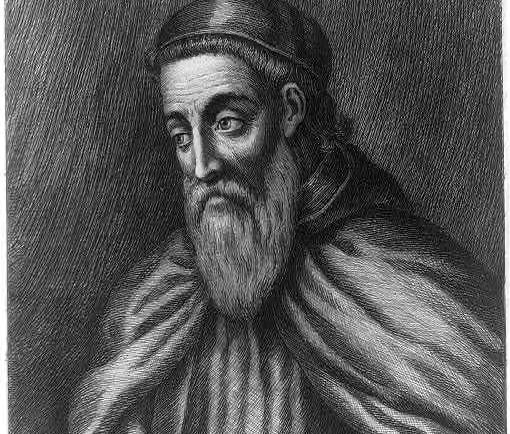Amerigo Vespucci
Christopher Columbus might have sailed the ocean blue, but it was Amerigo Vespucci who realized the lands across the Atlantic weren’t Asia—they were something entirely new. This sharp-eyed Florentine merchant-turned-explorer documented his discoveries in *Mundus Novus* and *Lettera di Amerigo Vespucci*, painting vivid pictures of vast rivers, exotic wildlife, and even cannibal encounters. His writings caught the attention of European scholars, and before he knew it, a German mapmaker had named an entire continent after him. How did a businessman with a knack for observation end up lending his name to half the world? Let’s dive into his incredible story.
2/10/20253 min read


The Man Who Got a Continent Named After Him (Without Really Trying)
Everyone knows Christopher Columbus "discovered" America (except for the millions of people already living there). But if Columbus put the New World on the map, why isn’t it called Columbia? That honor belongs to a lesser-known yet equally fascinating explorer: Amerigo Vespucci, the man who figured out that Columbus had been wrong the whole time. His travels, chronicled in Mundus Novus and Lettera di Amerigo Vespucci, revealed that the lands across the Atlantic weren’t just the outskirts of Asia—they were an entirely new continent. And thanks to a lucky twist of history, his name would live on forever.
From Florentine Bookkeeper to Unexpected Explorer
Born in Florence in 1454, Vespucci wasn’t originally destined for adventure. He was a merchant, a businessman, and, for a time, a ship supplier. But when Spain and Portugal started sending ships across the ocean, Vespucci saw an opportunity. Somewhere between balancing ledgers and stocking ships, he managed to convince the Spanish Crown to let him tag along on an expedition.
Between 1499 and 1504, Vespucci sailed on at least two (and possibly four) voyages along the coast of South America. Unlike Columbus, who stubbornly insisted he had reached Asia, Vespucci actually paid attention to what he was seeing. After sailing down the Amazon River, spotting the massive landmass stretching endlessly to the south, and meeting indigenous peoples who had clearly never heard of the Great Khan, he had an epiphany: This wasn’t Asia at all—it was a New World (Vespucci, Mundus Novus, p. 12).
The Man Who Named America (Sort of)
Vespucci’s letters describing his travels, including Mundus Novus and Lettera di Amerigo Vespucci, became bestsellers in Europe. He vividly detailed the exotic lands, strange animals, and people he encountered. He was particularly fascinated by the lifestyles of the indigenous peoples, noting that they “live according to nature rather than laws” (Lettera di Amerigo Vespucci, p. 23)—which was a polite Renaissance way of saying they didn’t care about European social norms.
His observations caught the attention of a German cartographer, Martin Waldseemüller, who in 1507 created a new world map. Since Vespucci was the one who recognized that this was a whole new continent, Waldseemüller labeled it “America” in his honor. Columbus might have gotten there first, but Vespucci got the branding rights.
Ironically, Vespucci himself never bragged about the name. In fact, he later worked for the Spanish government as a navigator and never actively sought fame. But by then, the name had stuck, and even when Waldseemüller later tried to correct the mistake, it was too late—America had already become America.
Jaguars, Cannibals, and Other Vespucci Adventures
Vespucci’s writings weren’t just about geography; they were filled with wild stories about the New World. In one letter, he described jaguars so fierce that they could drag a man into the jungle in seconds (Mundus Novus, p. 38). In another, he recounted witnessing a local tribe cook and eat their enemies—an experience that, unsurprisingly, made a lasting impression (Lettera di Amerigo Vespucci, p. 41).
But not all his observations were terrifying. Vespucci also gushed about the abundance of nature, the beauty of the landscape, and the incredible size of the rivers—so vast that “one could sail for weeks and still not see the end” (Mundus Novus, p. 27). He was both an adventurer and a scientist, more interested in understanding these new lands than in conquering them.
The Quiet End of a Big Name
Unlike Columbus, who died still convinced he had reached Asia, Vespucci knew exactly what he had found. He spent his later years as a respected mapmaker and explorer in Spain, helping to plan further voyages. He died in 1512, relatively unknown compared to his more dramatic contemporaries. Little did he know, his name would become one of the most famous in history.
So next time you hear "America," spare a thought for Amerigo Vespucci—the businessman-turned-explorer who just wanted to map the world but ended up naming half of it instead.
